I have a graph like this:

And I want to be able to convert the position of P1 aka the ball you can drag around to scale with different starting and ending points on my screen.
I esentially want to make it so that the curve dot is around the same position no matter where the starting and ending positions are for the curve
So if I had a different points on my screen it would look the same as the graph
This is what I tried to do but it didn't work
function bezier.scale(startingPosition : Vector2, endingPosition : Vector2)
local screenSize = workspace.CurrentCamera.ViewportSize
local lengthX = (endingPosition.X - startingPosition.X)
local lengthY = (endingPosition.Y - startingPosition.Y)
local screenRelativeX = (screenSize.X - startingPosition.X) + lengthX
local screenRelativeY = (screenSize.Y - startingPosition.Y) + lengthY
local scaleX = (screenRelativeX / graphBackground.Size.X.Offset)
local scaleY = (screenRelativeY / graphBackground.Size.Y.Offset)
local x = (bezierPoint.Position.X.Offset * scaleX)
local y = (bezierPoint.Position.Y.Offset * scaleY)
return Vector2.new(x, y)
end